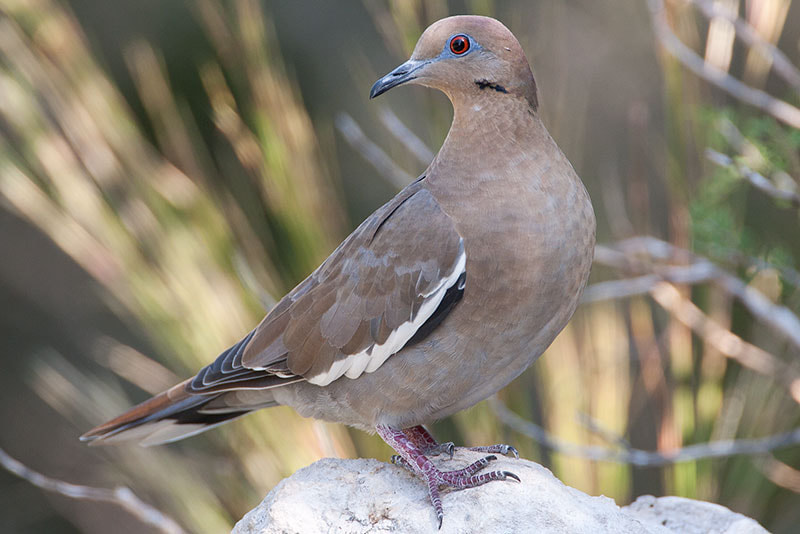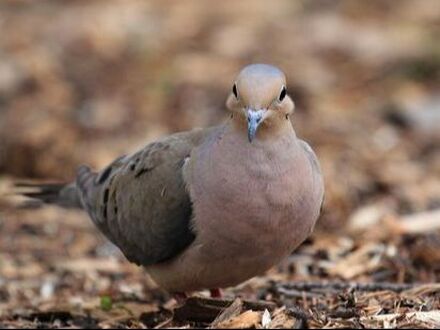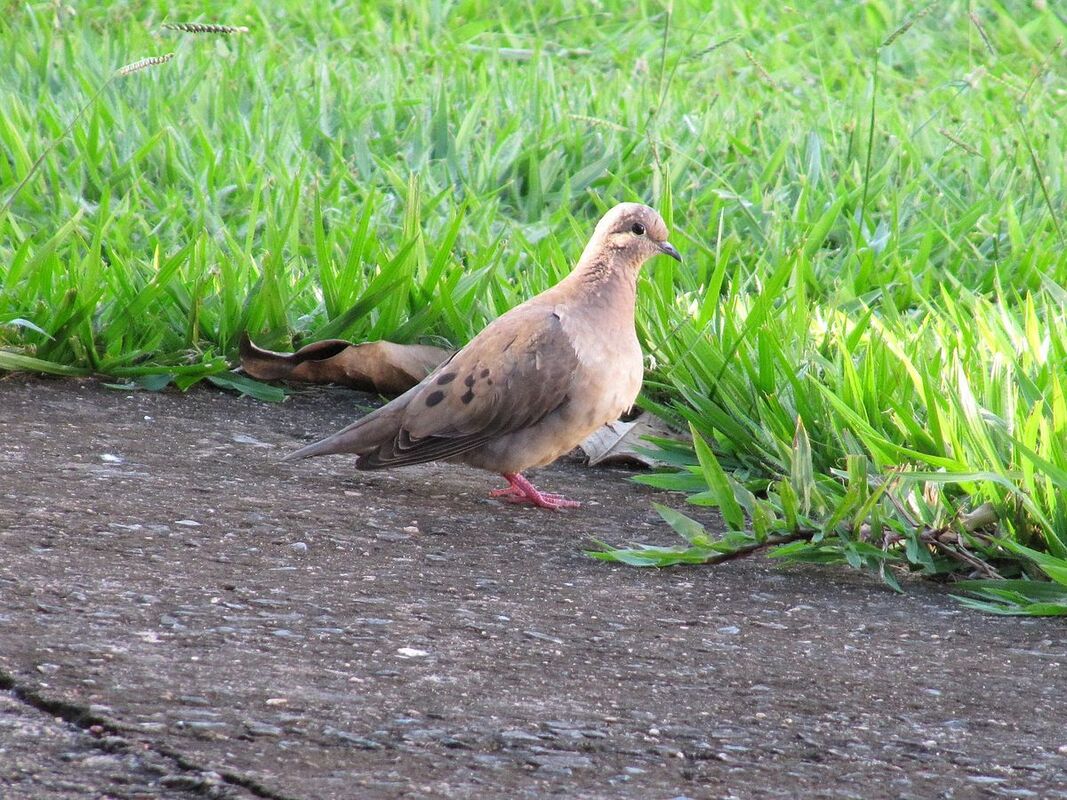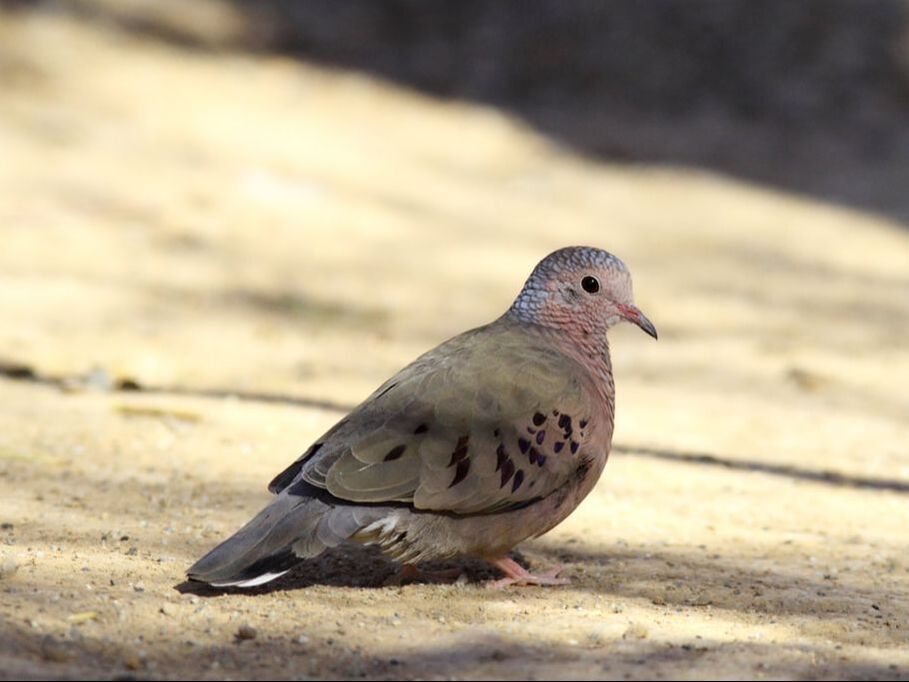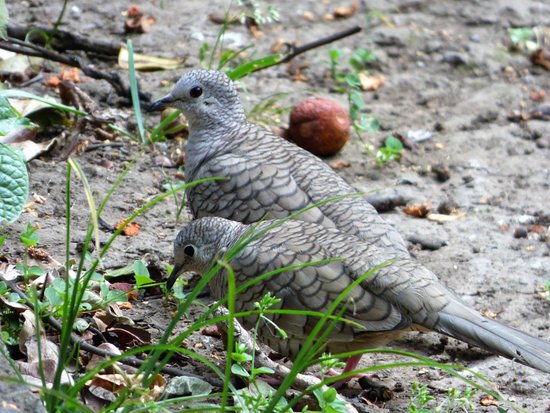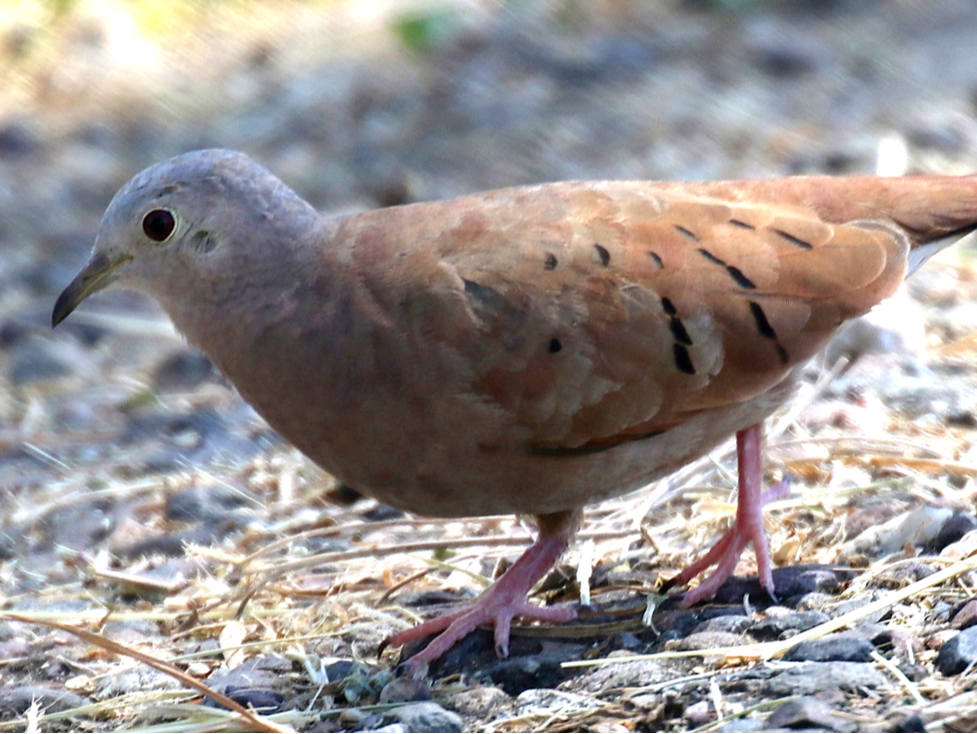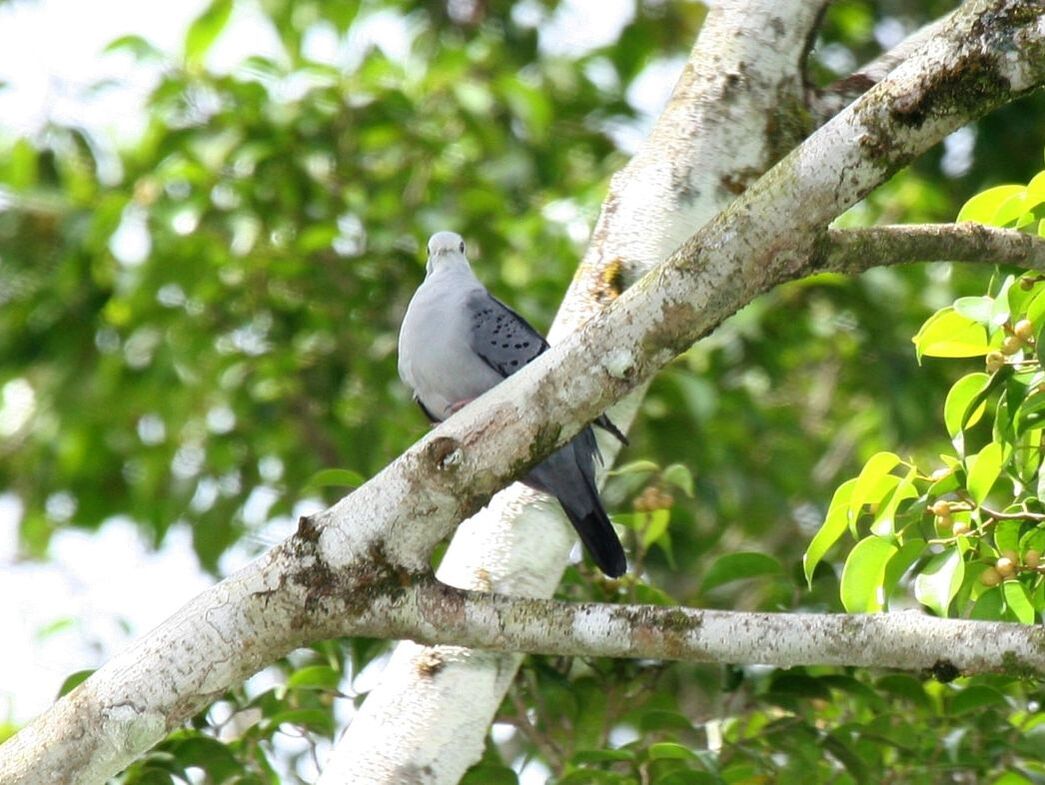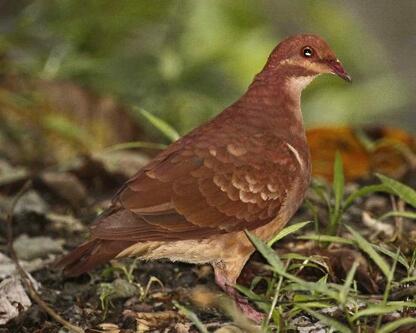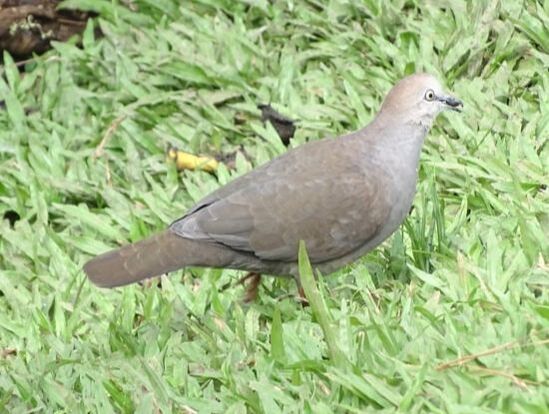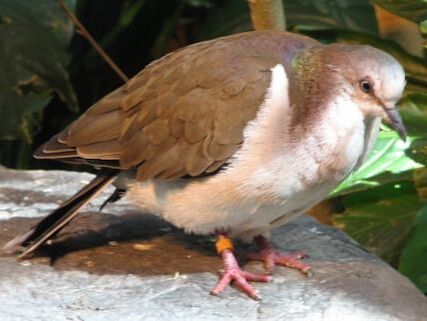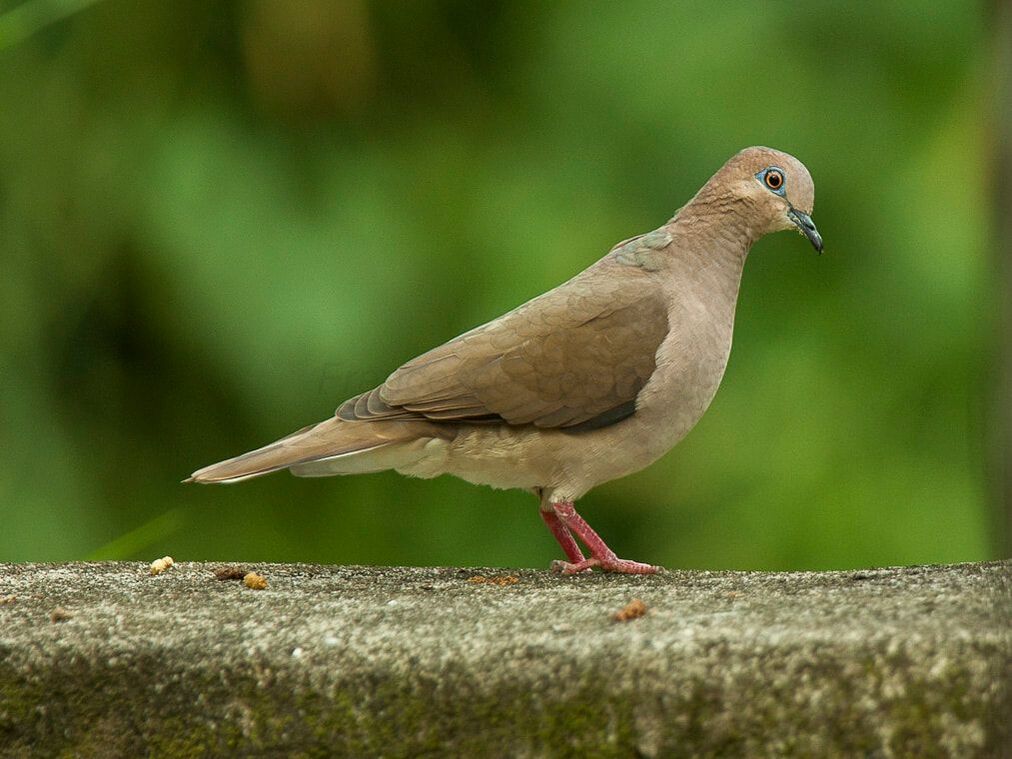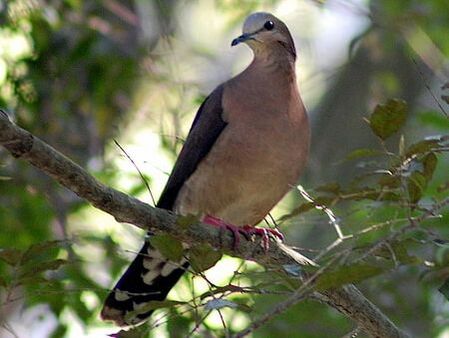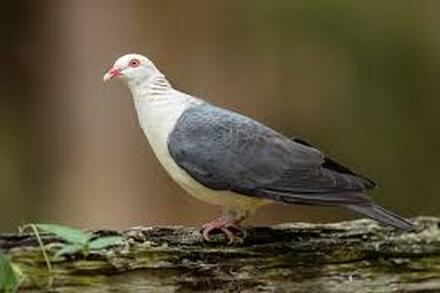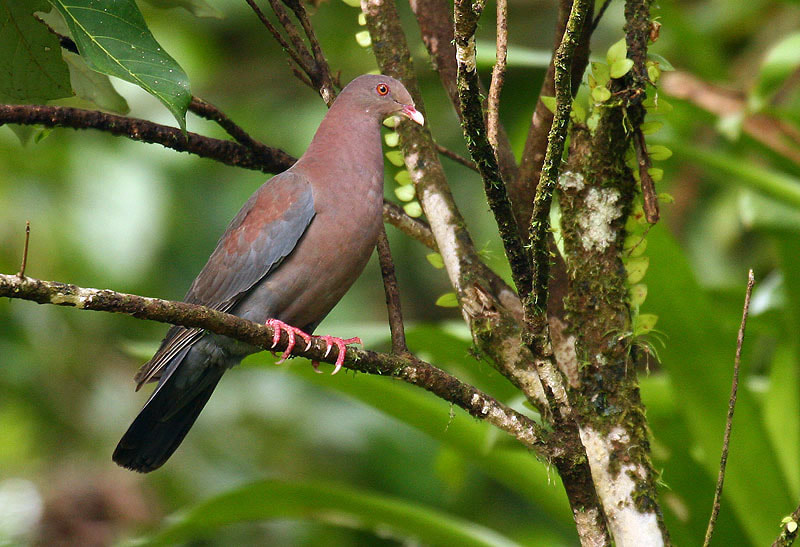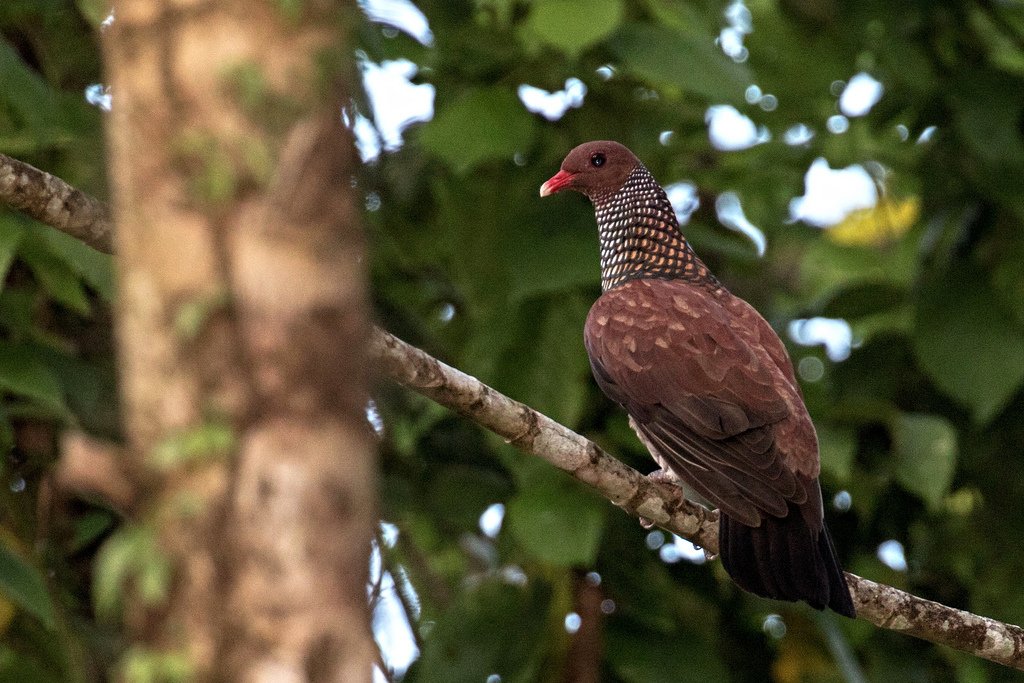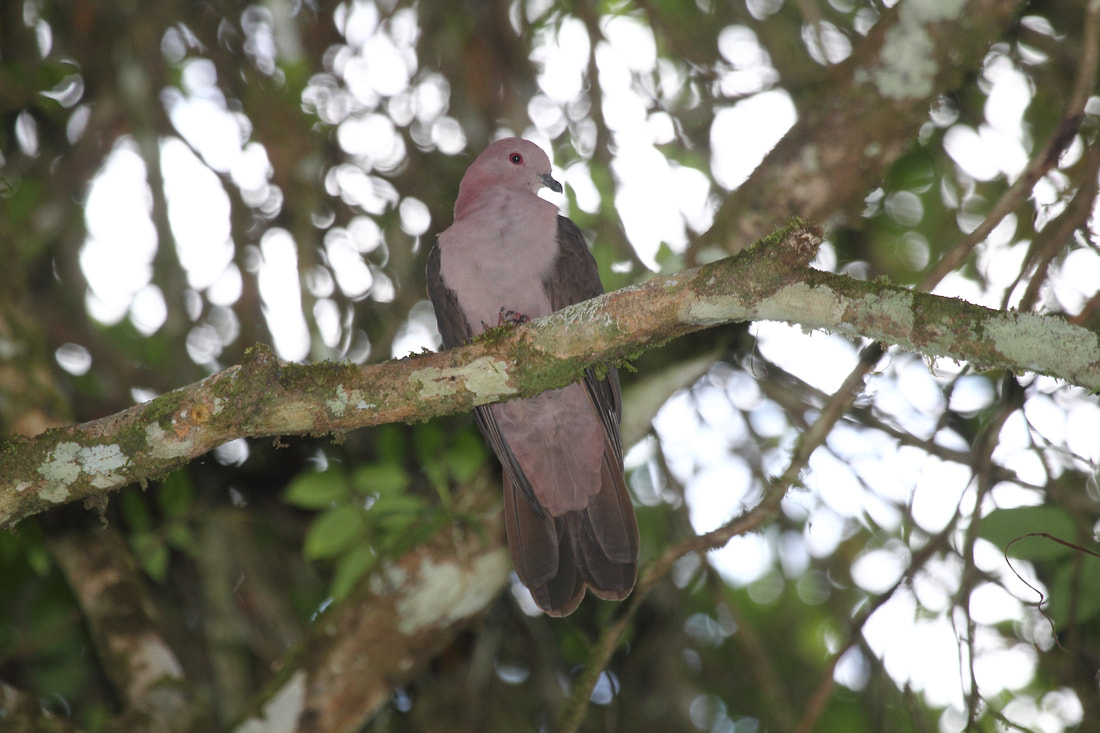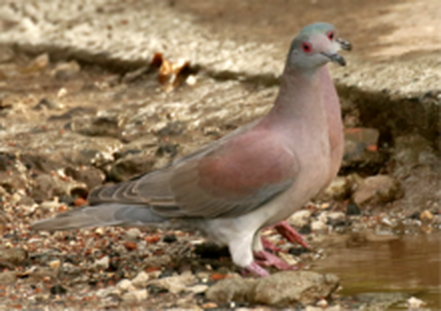Doves & Pigeons - in Belize
White-Winged Dove
White Winged Dove - Even brown overall with conspicuous white patch on wings. On a perched bird, white patch looks like a line along the bottom edge. In flight, wing shows much more contrast than Mourning Dove and tail is shorter. Found in desert habitats in the Southwest, cities and suburbs of Texas, and the coastal Southeast. Often visit backyards.
BELIZE HABITAT - Pasturland, fallow fields, patchy second growth scrub, towns and villages. Where can you find this bird in Belize? Unrecorded prior to 1967, it is now a common resident in Corozal, north east Orange Walk, Ambergris Caye, and Caye Caulker. It disperses widely in autumn commonly to central Orange Walk and north Belize, less common farther south and west. Uncommon to fairly common autumn transient in Stann Creek and Toledo (October to November); these birds may originate from north Belize and Yucatan Pen. where the species is partially migratory. |
Mourning Dove
Mourning Dove - Very common, widespread dove. Almost half the size of Rock Pigeon. Chunky body, small head and pointed tail. Brown with dark spots on wings. Pinkish-beige belly is slightly paler than wings. Found in a variety of habitats with some shrubs and trees; loves suburbs. Avoids dense forest, but found on forest edges.
BELIZE HABITAT - Pastureland, fallow fields, savannas, towns, and villages. Where can you find this bird in Belize? Uncommon autumn transient and occasional winter visitor, primarily in north half, mid-October to late March. |
Plain-Breasted Ground Dove
Plain Breasted Ground Dove - Small, inconspicuous dove of savannas and open grassland with scattered low bushes and palmettos; also found locally in cane fields and pastures. Usually found in pairs or small groups, sometimes associating with other ground doves. Both sexes are rather plain overall, with diagnostic purple marks on the back, although the color is often hard to see. The female can be easily confused with the much commoner Ruddy Ground Dove, which also has a plain breast, but the Ruddy Ground Dove is larger and warmer brown overall; also note vocal differences.
BELIZE HABITAT - Ground and low perches. Throughout most of its range in Belize, closely tied to pine and pine oak savannas, but outside this belt also found in fallow fields, pastureeland, and other disturbed un-forested landscapes. Where can you find this bird in Belize? Uncommon to common resident on mainland west to central Orange Walk, north east Cayo, and east base of Maya Mountains. |
Common Ground Dove
Common Ground Dove - Tiny dove with short, square-tipped tail. Sandy brown with dark spots on wings. Wings are bright rufous in flight. Inhabits open or shrubby areas with tall grasses or groves of trees, including riparian corridors and open savannas; also in towns. Often on the ground at backyard feeders. Eats seeds and grains, some insects.
BELIZE HABITAT - Ground and low perches in most well-drained unforested habitats. On mainland, found especially in pine and pine oak calabash savannas; also along roadsides and in fields. Where can you find this bird in Belize? Fairly common to common resident in coastal lowlands south to south Belize. Also common on Ambergris Caye and Placencia Pen.; uncommon on Caye Caulker. In autumn and winter, occasionally seen west to central Orange Walk and north Cayo and south to Punta Gorda. |
Inca Dove
Inca Dove - Tiny dove. Very long tail with obvious white outer tail feathers. Scaly pattern covers entire body, unlike Common Ground Dove. Found in neighborhoods and arid areas. Listen for soft whistle, saying "no-hope." Sounds like a rattlesnake when it takes off.
BELIZE HABITAT - Open areas, roadsides, forest edge, plantations, towns and villages. Where can you find this bird in Belize? One record; Punta Gorda on September 8, 1996. |
Ruddy Ground Dove
Ruddy Ground Dove - Small, well-named ruddy dove of humid open and semi-open areas, often in villages and even towns, where sometimes perches on wires. Often in groups, sometimes even a hundred birds, which flush explosively from underfoot. Male is ruddy overall (but much paler in West Mexico); female is plain grayish brown overall, lacking scaly breast of slightly smaller Common Ground Dove. Like other ground doves, both sexes of Ruddy show bright rusty wing patches in flight.
BELIZE HABITAT - Widespread; ground and low perches in most well-drained unforested areas, including roadsides, urban landscapes and savannas. Where can you find this bird in Belize? Common resident nearly throughout on mainland; absent from Mountain Pine Ridge and Maya Mountains. Possibly a scarce winter visitor on Ambergris Caye. |
Blue Ground Dove
Blue Ground Dove - Attractive small dove of humid forest edges and clearings in tropical lowlands; in some places wanders into small rural villages. Typically rather wary, and most often seen in fast, rather direct flight, as singles or pairs. Powder-blue male is striking and distinctive. Female is most easily identified when with the male. On lone females, note the rusty rump and rather long rusty tail.
BELIZE HABITAT - Typically sub-canopy, but occasionally lower and on ground, primarily in broadleaf forest and secondarily in pine forest. Usually solitary or in pairs; occasional gathering in small groups or flocks that feed on ground in clearings and at forest edge. Where can you find this bird in Belize? Uncommon to common on mainland nearly throughout; scarce or absent in much of Corozal, but progressively more common southward. |
Ruddy Quail Dove
Ruddy Quail Dove - Shy and infrequently seen, rather chunky dove of tropical forests and plantations in the lowlands and foothills. Walks stealthily on the forest floor singly or in pairs. Most often seen as it flushes explosively from underfoot or flies low across a quiet road or trail. Bright ruddy-colored male is distinctive. Female is brown overall with a trace of the male’s facial pattern and has a pale vertical bar on the sides of the breast. Females lack the white tail corners as seen on White-tipped Doves and related species.
BELIZE HABITAT - Widespread; ground and low perches in most well-drained unforested areas, including roadsides, urban landscapes and savannas. Where can you find this bird in Belize? Common resident nearly throughout on mainland; absent from Mountain Pine Ridge and Maya Mountains. Possibly a scarce winter visitor on Ambergris Caye. |
Gray-Chested Dove
Gray Chested Dove - Retiring, terrestrial dove of humid tropical forest in the lowlands. Heard more frequently than seen. Like other members of the genus, it can be found walking quietly on shady roadsides and trails, especially early and late in the day. It often flushes explosively and flies to a low perch in the understory. Told from White-tipped Dove and Gray-headed Dove by warm brown crown and hindneck, and duskier grayish chest. In flight, all Leptotila doves show white tail corners and rusty under the wings.
BELIZE HABITAT - Ground to mid-strata in primary and secondary humid broadleaf forest. Often found regular with Gray-Fronted but avoids the more open forests. Where can you find this bird in Belize? Fairly common to common resident on mainland in south half, north in Maya Mountains and foothills to south west Belize and north Cayo. |
Caribbean Dove
Caribbean Dove - Retiring dove of forest floor, heard much more frequently than seen. Like other members of the genus, can be found walking quietly on shady roadsides and trails, especially early and late in the day. Not easily told by sight from White-tipped Dove, which occurs alongside Caribbean in Yucatan Peninsula of Mexico. Best feature is white face and pale bluish nape of Caribbean Dove. Also compare Gray-headed Dove. In flight, all species show white tail corners and rusty on underwings.
BELIZE HABITAT - Ground to mid-strata in littoral forest and edge. Where can I find this bird in Belize? Fairly common resident in north east Corozal and on Ambergris Caye. Recorded on Caye Caulker but not resident; one record from near Ladyville Belize. |
White-Tipped Dove
White Tipped Dove - Plump, pale dove that is medium-brown above and paler grayish-tan below with red legs. The face is white with a pale eye. Named for white corners on tail, seen in flight. In flight, also note rufous underwings. Shorter-tailed than Mourning Dove, without black spots on wings. Common and widespread throughout Central and South America. Found in wooded habitats. Occasionally at bird feeders, otherwise shy; sticking to the ground inside forest. Low cooing song starts with an introductory hoot followed by a longer hollow note.
BELIZE HABITAT - Ground to mid-strata in deciduous and semi-deciduous broadleaf forests, second growth scrub, pine woodland, and savannas. Absent from humid tropical forest. Where can I find this bird in Belize? Fairly common and widespread resident on mainland south to central Cayo and north Toledo. |
Gray-Fronted Dove
Gray Fronted Dove - Large terrestrial dove found in a variety of habitats including forest edges, dense secondary growth, and mature forest understory. Skulking and easy to overlook, but can often be seen walking on quiet trails early and late in the day. In flight, white tips on outer tail feathers are often visible, like in similar White-tipped Dove, but with less extensive white. Also distinguished from that species by red, not blue skin around eye, and brighter more contrasting gray forehead. Frequently heard song is a mournful “hoop,” repeated every 5–10 seconds, particularly in the morning.
BELIZE HABITAT - Ground to mid-strata in broadleaf forests, including both primary and secondary forest, as well as patch forest. Avoids pine forests and savannas. Where can you find this bird in Belize? Fairly common to common resident on mainland north to east Corozal, but largely replaced by White-Fronted Dove in north. |
Pigeons - in Belize
White-Crowned Pigeon
White Crowned Pigeon - Large dark pigeon, entirely dark gray with contrasting white cap. Pink bill and legs. Adult has iridescent greenish scalloping on nape; difficult to see without a good view. Juvenile shows only faint pale forehead. Mainly a Caribbean species, restricted range in US; found in forested areas in extreme southern Florida, especially mangroves. Tends to be quite shy; most often seen in pairs or small flocks, often in flight. White cap and pink bill separates from all-dark morph of Rock Pigeon. Coos like a Mourning Dove but with slightly different pattern.
BELIZE HABITAT - Canopy within littoral forest. Where can you find this bird in Belize? Uncommon to common summer resident on cayes, including Ambergris Caye, late February to mid-October. Most birds leave cayes in winter and apparently move to adjacent mainland coast. The few mainland records may be explained by the fact that the total population is small and may be largely absorbed by the relatively vast coastal mainland. Recorded once inland in spring from Hill Bank. During the breeding season, birds on inner cayes may occasionally commute to and from mainland (i.e summer records from near Dangriga). |
Red-Billed Pigeon
Red Billed Pigeon - Large dark pigeon; body and wings mostly blue-gray with reddish-purple neck and head. Bill and legs red. Eye yellow with red eyering. Immature paler gray without maroon tones. Common from Mexico to Costa Rica; very limited range in U.S. Found in woodlands, often close to water. Tends to be quite shy; most often seen in pairs or small flocks, often in flight. Listen for low cooing song: "whoo, whoop-a-whoo."
BELIZE HABITAT - Principally semi-deciduous and deciduous broadleaf forest, sub-montane pine forest. Where can you find this bird in Belize? Variously scarce to very common resident on mainland, most common in north and west, south to central Belize and cental and south Cayo, occasionally farther south. Seldom seen and apparently not resident, in Toledo. One record from Caye Caulker. Absent from Maya Mountains. With only one record for Belize as late as 1964, it has literally invaded the country in the past 40 years. |
Scaled Pigeon
Scaled Pigeon - Handsome large pigeon of humid forest and edge in tropical lowlands. Usually seen flying overhead, less often perched in canopy of tall trees. The male is ruddy brown overall and the female is gray-brown overall. Both have a bright-red, creamy tipped bill and extensive dark scalloping and scaling on the neck, chest, and underparts. In flight, note the whitish belly that contrasts with the blackish underside to the tail.
BELIZE HABITAT - Canopy of most broadleaf forest types; occasionally pines. Where can you find this bird in Belize? Variously scarce to common resident in forested areas on mainland. Distribution is complicated by tendency of populations to move around seasonally and may be tied to fruiting seasons of certain preferred food tress. Absent from some areas of seemingly good habitat and common in others. |
Short-Billed Pigeon
Short Billed Pigeon - Overall dark pigeon of humid evergreen forest in tropical lowlands. Lives mainly in the canopy, where it is hard to spot, although its far-carrying hoo’koo-koo-koo song is often heard and may help in locating it. Sometimes feeds on fallen fruit on the ground, where it can be seen beside quiet trails. Plumage is dark brownish above, with a pinkish head, chest, and underparts. Note the short black bill.
BELIZE HABITAT - Sub-canopy and canopy interior of primary and secondary broadleaf forest and forest edge. Where can you find this bird in Belize? Common resident north to north Orange Walk and possibly south Corozal; most common in south and interior. |
Pale-Vented Pigeon
Pale Vented Pigeon - Large pigeon of marshy savannas, riversides, open areas with scattered trees, locally even in towns, such as Villahermosa, Mexico. Gray head contrasts with pinkish body, and whitish belly does not contrast strongly with plain grayish tail; compare darker Red-billed Pigeon, which often occurs in same areas but prefers drier and more forested habitats. Also note black bill of Pale-vented, and subtly distinctive song: after long introductory coo, repeated phrase is typically a 3-syllable "who’koo-koo", unlike 4-syllable "oo’koo-koo-koo" of Red-billed.
BELIZE HABITAT - Canopy of open and patchy broadleaf and pine forest, second growth, forest edge, mangroves, and littoral forest; also towns and villages. Where can you find this bird in Belize? Common resident nearly throughout, including many nearshore cayes. Generally more numerous coastally than inland; absent from areas of continguous forest. Regular to occasional, non-breeding visitor to outer cayes (i.e. Caye Caulker). Recorded from Ambergris Caye but possibly not resident. |

